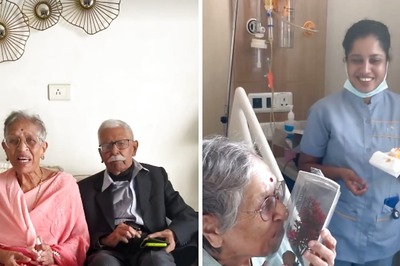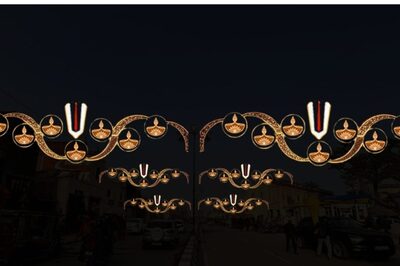
views
New Delhi: For “thin fat Indians”, who form a majority of diabetes patients among Indians, five new ways to classify the disease could mean better, more accurate treatment at long last.
For one of India’s top diabetologists, Dr V Mohan, president of the Madras Diabetes Research Foundation, the latest research in The Lancet only made official what he and other specialists have long known, there are far more types of diabetes than just type 1 and type 2.
And treatments for each, especially the many categories lumped under type 2 needs to vary from patient to patient.
On March 2, the medical journals The Lancet: Diabetes & Endocrinology published the results of a study by University of Gothenburg and Lund University in Sweden that classified diabetes into five types, which on diagnosis that went far beyond the two standard criteria of age and the way a patient’s body metabolises glucose.
This is a huge step forward in diagnosing and treating the disease -- which had affected 422 million people globally in 2014 -- as the system of classification hasn’t been updated in 20 years, the study noted. Most general physicians, especially in India, will be unfamiliar with the heterogeneous nature of type 2 diabetes, especially with the different responses to insulin among different patients, said Dr. Mohan.
“We all knew that that type 2 was a basket with many types. The good thing about this study is that they’ve got at least five categories,” he told News18, “however, I think there are almost 25 to 30 types of diabetes.” This, if one counts the rarer forms of the disease.
The current five classifications are Severe Insulin-Resistant Diabetes (SIRD), which results in the highest levels of insulin resistance and highest risk of kidney disease. This, said Mohan, happens to more obese patients. Their bodies produce insulin which they are resistant to.
The second form is the Severe Insulin-Deficient Diabetes (SIDD), which the study noted was found in relatively young adults with especially poor metabolic control. Said Mohan, this is what most Indians are affected by. India, popularly called the diabetes capital of the world, has 69.1 million patients. However, though Indians are overweight, their BMI cannot be compared with the bulk that patients from Europe or the United States carry.
“Indians are much smaller in comparison,” said Mohan, “we are ‘thin fat Indians’ as we carry weight around the abdomen.” Such bodies don’t produce enough insulin at all. Severe Autoimmune Diabetes is largely similar to the current type 1 diabetes, which is diagnosed from a very young age. The last two, less harmful forms were, Mild Age-Related Diabetes (MARD) and Mild Obesity-Related Diabetes (MOD).
“We do have cases of insulin resistant diabetes, but that’s not as severe as in patients from the west,” said Mohan. Thus, Indians need different types of drugs, than just blanket type 2 prescriptions. Mohan, who was awarded the excellence in research by the Indian Council of Medical Research in October 2017, and the Padma Shri in 2012, has long worked on differing drug responses among different groups of patients, and more customised diagnosis, through genetic screening.
He co-published a paper in February, 2018, that identified a gene for a rare type of diabetes. This is the 15th such type of Mature Onset Diabetes of the Young (MODY), with Mohan having worked extensively on the 14 previous ones.




















Comments
0 comment